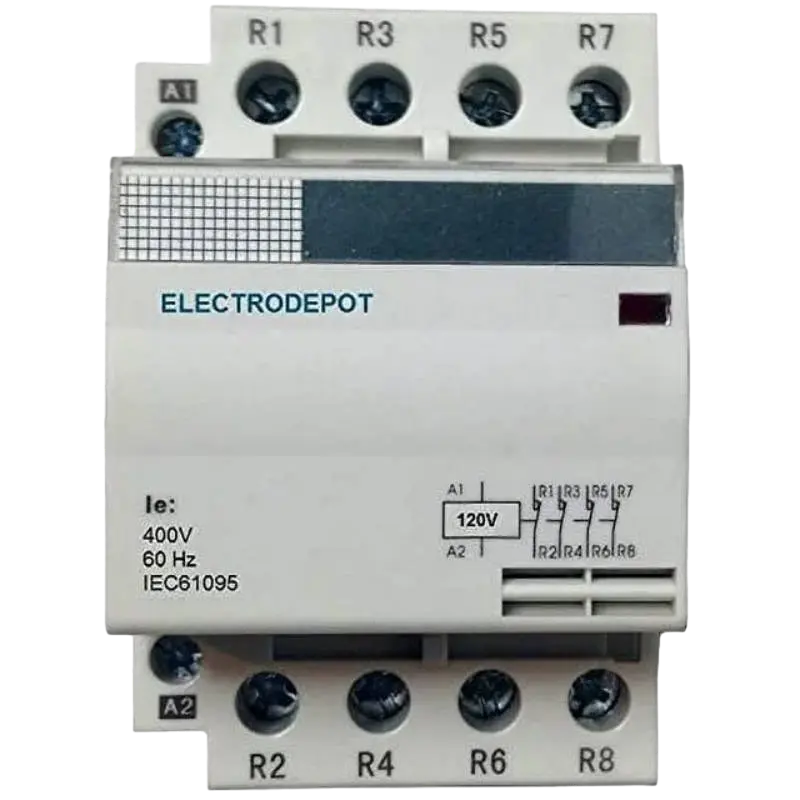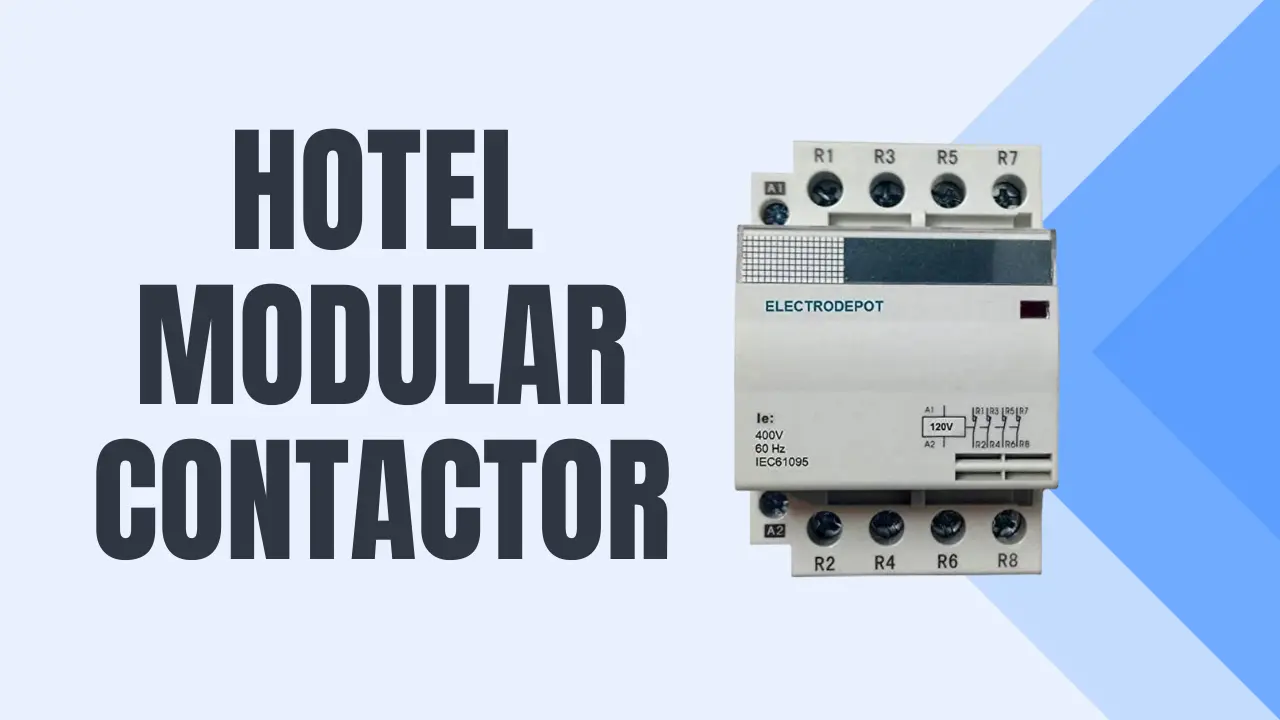Flip on a light switch or turn the dial to adjust the thermostat in any major hotel, and behind the scenes are intricate electrical systems powering these convenient amenities that guests often take for granted. But maintaining and controlling complex electrical networks across sprawling hotel properties is no simple feat for facility managers and maintenance teams. Fortunately, modular contactors provide a versatile, heavy-duty switching solution to help ensure seamless electrical operation.
From lighting and ventilation to elevators and pool pumps, modular contactors are the workhorses that empower staff to remotely control electrical circuits delivering power across their properties. Keep reading to learn what these devices are, how they function, where they’re used, and what features to look for when selecting these industrial-strength electrical switches for your hotel.
What Are Modular Contactors?

Inside these modules are sets of power contacts connected to electromagnets, or coils. The coils open and close the contacts when triggered by separate control signals. This switching action connects and disconnects the flow of electricity in a circuit.
Modular contactor modules are designed with robust mechanical components that can withstand frequently cycling high electrical loads on and off. This durability and cycling capacity make them well suited for the demands of hotels with vast electrical networks powering numerous systems.
How Do Modular Contactors Work?
Modular contactors contain three main components that power their functionality:
Coils – Electromagnets that are separately wired to control signals determine when the contactor turns on or off. When the coil receives a control voltage, it produces a magnetic force.
Contacts – Thick power contacts designed for high electrical loads. The magnetic pull from the energized coil will open or close these stationary and movable contacts to allow or break the flow of electricity.
Enclosure – A protective housing, typically DIN rail mounted but sometimes panel installed. Holds the components in place and allows for safe operation.
This sequence summarizes how a basic modular contactor functions:
1. An external control signal from a switch, sensor, etc. activates the electromagnet coil.
2. The magnetized coil pulls and closes the stationary and movable power contacts together.
3. Closed contacts enable electricity to flow through the contacts to downstream electrical loads.
4. Cutting the control signal deactivates the coil, releasing the magnetic force.
5. Contacts spring back open, cutting power from the circuit.
The onboard components are fixed together inside durable plastic or metal enclosures suitable for mounting inside electrical closets, equipment rooms, distribution panels, etc. Standard din-rail mounting options allow for flexible installation.
Modular contactor modules are produced with multiple poles to control multi-wire branch circuits. Two and three-pole versions are common. Each pole gets independently actuated by standardized voltages (e.g 120V, 208V, etc.) suited for commercial buildings.
Benefits of Modular Contactors for Hotels
Offering automated, robust switching capacity, modular contactors provide hotels with several advantages over alternative control options:
· Withstand high inrush currents for reliably switching large loads on/off
· Higher electrical ratings than basic control relays
· Enables remote control of electrical circuits from virtually anywhere
· Compact, modular design simplifies installation
· Many innovative features (e.g integrated overload protection)
· Durable, high-cycle construction for heavy commercial duty
· Standardized for seamless integration and replacement
Common Hotel Applications
Engineered for versatility, modular contactors have become a hotel infrastructure staple used across nearly any large electrical load.
Property maintenance teams can leverage them to wire convenient wall switches that enable staff to safely toggle many lighting circuits or ventilation fans on and off instead of manually unplugging them. Their strong electromagnets ensure smooth transitions handling the high initial currents when circuits activate to prevent nuisance tripping issues.
Units installed inside motor control panels allow facilities staff to wire start/stop control switches for remotely commanding heavy pumps or motors powering appliances like elevators, commercial laundry machines, pool filtration systems, etc. This saves significant time toggling multiple main disconnects on and off during maintenance.
In guest room control panels, switching units enable automatic energy-saving settings to power down unused appliances when guests leave. Connecting thermostat demand contacts ensures seamless handoffs toggling between standard units and more advanced computerized building automation controllers as needed.
With easy din-rail installation, electricians can efficiently wire modular contactors on electrical room distribution panels to add intelligent switching capacity controlling lighting zones across whole building wings. Onboard overload protection even provides an added layer of motor circuit safeguarding.
And interfacing fire alarm systems lets emergency signals reliably kill power to lighting circuits and cut airflow to contain emergencies. Especially useful for large or dated structures lacking modern centralized emergency overrides.
With such versatility spanning nearly any hotel electrical circuit, modular contactors undoubtedly provide a wise, long-term investment towards improving electrical control and energy management.
What to Look for When Selecting Modular Contactors
With the sheer variety of models meeting different voltage, amperage, pole, and feature needs, selecting suitable modular contactors for your property takes a bit more consideration than installing basic breakers or fuses. Keep these key specs and capabilities in mind:
Electrical Load Rating
Verify the contactor’s amp/voltage ratings meet or exceed the anticipated loads. Underrated units pose fire risks from contacts overheating. Commercial electricians can assess electrical draws.
Switching Cycles
Check the mechanical lifespan ratings which indicate the approximate cycles switching on/off before failure. Opt for high-end industrial models rated for millions of cycles if regularly toggling motors or lighting.
 Pole Configuration
Pole Configuration
Purchase options matching the branch circuit pole wiring. Multi-wire circuits require multiple independently controlled power poles within the contactor body.
Overload Protection
Models with onboard overload relays add protection against shorts and overcurrents plus remove reliance on external motor starters for a more consolidated design.
Control Voltage
For interfacing building controls, confirm suitable coil voltage options. Control circuits commonly run on 120VAC or 24VDC.
With their critical behind-the-scenes role remotely controlling electrical circuits, modular contactors need to meet the highest durability and performance standards to maintain guest satisfaction and safety. Partnering with reputable manufacturers like Chint or Fuji Electric ensures commercial-grade construction capable of meeting the most demanding hotel applications.

 Pole Configuration
Pole Configuration